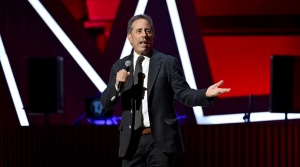What’s Next for Iran?
Published January 10, 2018
Iran, a complicated nation of 82 million, is in the midst of yet another round of street protests — the most widespread demonstrations targeted against the ruling theocratic regime since the so-called “Green Revolution” in 2009.
Those protests were well organized and had a coherent leadership whose members could be identified, arrested or killed. As a result, the 2009 revolution only served to solidify the grip on Iran by the Ayatollah Ali Khameini, the supreme leader.
The protests did lead to the election of President Hassan Rouhani, who had been described as a moderate. But in office, Rouhani has hardly been a voice of moderation. He continues to lead weekly rallies that feature cries of at “Death to America” and “Death to Israel,” and under his presidency Iran continues to prop up Syrian dictator Bashar Assad and the terrorist group Hezbollah.
ADVERTISEMENT
At first it appeared that the new round of marches could indeed force the theocratic regime from power, just as similar protests led to the collapse of several Communist nations in Eastern Europe and the Soviet Union itself.
Sadly, when pro-democracy and anti-regime demonstrators take to the streets, they rarely succeed, and the situation in Iran may prove to be no different. A quick look at history shows a sad litany of failure and frustration.
In East Germany in 1953, Hungary in 1956 and Czechoslovakia in 1968, citizens of these Communist bloc nations staged widespread protests against their Stalinist governments. The Soviet Union ended those revolts by sending tanks and troops to put them down with brute force.
ADVERTISEMENT
The United States is blamed if it backs the protesters, as it did in Hungary in 1956, and it is criticized when it fails to come to the aid of demonstrators. In 1956, Secretary of State John Foster Dulles said that the United States would not intervene in Hungary, which was a satellite state of the Soviet Union. But if the protesters came to NATO nations after their revolt was crushed, the U.S. and its allies would welcome them.
More recently, in the 2009 demonstrations in Iran, President Barack Obama was strongly criticized for failing to provide any kind of backing for the protesters, preferring to “wait and see.” President Donald Trump has taken Obama to task for failing to support the protesters, but has not offered any practical way of intervening.
Military involvement would draw the United States into yet another major campaign that could hardly be assured of victory. Even if the theocratic regime were overthrown militarily, what would take its place?
Trump may be repeating the mistake made by President George H.W. Bush after the first Gulf War. Bush chose not to finish off Saddam Hussein, having completed his stated mission to drive Iraqi forces out of Kuwait. Instead, he urged Kurds in the north and Shia Muslims to rebel against Saddam’s iron-fisted rule.
When the Kurds followed Bush’s advice, Saddam used deadly chemical weapons against them, killing 5,000 Kurds in the process. There was no meaningful support to assist them, and it was ill-advised for Bush to encourage a revolt which was doomed to failure.
Can Iran’s latest would-be reformers succeed where others have fallen short? A thoughtful analysis in The New York Times by Laura Secor, a scholar on Iran, noted the view that “Iran is the one nation that is the exception that proves the rule: It’s the textbook example of he country that meets every precondition for democratic transition, but still refuses to change.”
And even if change does come, will it be what the demonstrators want? In the past, hard-liners in the government have used protests as an excuse not to grant demands and enact reforms sought by the opposition but to crack down even harder, on the pretext that lawlessness was getting out of hand.
Fundamental change stemming from the most recent protests would be a positive development from the demonstrations convulsing Iran, helping to drive the anti-American, anti-Israel regime from power. But what happens after such victory? That question needs to be answered before the United States stumbles into yet another nation-building trap.















